Excel Vlookup From Another Workbook Without Opening
Excel is a powerful tool that allows users to organize, analyze, and manipulate data with ease. One of the most useful functions in Excel is VLOOKUP, which stands for “Vertical Lookup.” VLOOKUP allows users to search for a specific value in a vertical column and retrieve information from a different column in the same row. This function is particularly valuable when working with large datasets or when trying to locate specific pieces of information within a workbook.
VLOOKUP is beneficial for a variety of reasons. First, it saves time by automating tasks that would otherwise require manual searching and data retrieval. Second, it helps maintain data accuracy by reducing the chances of human error when searching and retrieving information. Finally, VLOOKUP enhances data analysis capabilities by providing a quick and efficient way to merge datasets and perform calculations based on specific criteria.
Overview of VLOOKUP from Another Workbook: Retrieving Data Without Opening the Source File
Sometimes, you may need to retrieve data from a different workbook without opening the source file. This could be due to security reasons, limited access to the source file, or simply wanting to keep multiple workbooks separate for organization purposes. Fortunately, Excel provides a solution to this problem.
With VLOOKUP, you can reference and retrieve data from another workbook without opening it. This allows you to access the required information while keeping the source file closed and secure. Additionally, it saves time and effort by eliminating the need to manually open each file to retrieve the necessary data.
Preparing for VLOOKUP: Ensuring Proper Workbook Formatting and Organization
Before utilizing VLOOKUP to retrieve data from another workbook, it’s important to ensure both workbooks are properly formatted and organized. This includes consistent naming conventions for worksheets and cells, maintaining clean data without duplications or errors, and ensuring all relevant data is located in columns or rows that can be easily referenced.
Furthermore, it’s crucial to specify the correct file path when referencing the source workbook. This includes providing the full file name along with its extension, such as “example.xlsx” or “sourcefile.xls”. Failure to accurately specify the file path can result in errors or the inability to retrieve the desired data.
Writing the VLOOKUP Formula: Specifying the Lookup Value and Defining the Data Range
To use VLOOKUP to retrieve data from another workbook, you must first specify the lookup value and define the data range. The lookup value is the specific value you want to find in the source workbook, while the data range is the range of cells in which the lookup value exists.
The syntax for the VLOOKUP formula is as follows:
=VLOOKUP(lookup_value, table_array, col_index_num, range_lookup)
The lookup_value is the value you want to search for in the source workbook. It can be a text string, numerical value, or reference to a cell within the current workbook.
The table_array is the range of cells in the source workbook that contains the lookup value and the corresponding data. It should include at least two columns, with the lookup value in the leftmost column.
The col_index_num specifies which column in the table_array contains the data you want to retrieve. It is counted from the leftmost column of the table_array, with 1 representing the first column, 2 representing the second column, and so on.
The range_lookup is an optional argument that specifies whether you want an exact match or an approximate match. By default, Excel assumes an approximate match if the argument is omitted or set to “True”. If you want an exact match, set the range_lookup argument to “False”.
Retrieving Data with VLOOKUP: Understanding the Lookup Process and Its Results
Once the VLOOKUP formula is written with the correct syntax and arguments, Excel will perform the lookup process. First, it will search for the lookup value in the leftmost column of the table_array. If an exact match is found, Excel will retrieve the corresponding data from the specified column in the same row.
If an exact match is not found, Excel will return the closest match that is less than the lookup value when the range_lookup argument is set to “True”. In contrast, if the range_lookup argument is set to “False”, Excel will only return an exact match and display an error message if it cannot find one.
It’s important to note that VLOOKUP searches for the lookup value from top to bottom in the leftmost column of the table_array. If there are multiple instances of the lookup value, VLOOKUP will only retrieve data from the first match it encounters. To retrieve data from subsequent matches, users may need to adjust the formula or use other functions, such as INDEX and MATCH.
Troubleshooting VLOOKUP: Handling Common Errors and Challenges
While VLOOKUP is a powerful function, it is not without its challenges. Here are some common errors and challenges you may encounter when using VLOOKUP to retrieve data from another workbook without opening it:
1. #N/A error: This error occurs when Excel cannot find the lookup value in the leftmost column of the table_array. Ensure that the lookup value exists and is spelled correctly in both workbooks.
2. Incorrect data range: Double-check that the data range specified in the VLOOKUP formula accurately reflects the range of cells in the source workbook.
3. Inconsistent formatting: If the lookup value contains formatting, such as leading spaces or non-printable characters, ensure that the formatting is consistent in both workbooks. You may need to use additional functions, such as TRIM, to remove formatting inconsistencies.
4. Closed-source workbook: If the source workbook is closed, make sure that the file path is correct and refers to the closed workbook. Additionally, ensure that the source workbook is not password-protected or that you have the necessary permissions to access it.
5. Slow performance: Retrieving data from another workbook without opening it can be slower compared to retrieving data from an open workbook. To improve performance, consider reducing the size of the source workbook or using alternative methods, such as VBA macros.
Advanced Techniques: Modifying VLOOKUP to Meet Specific Requirements
Excel offers advanced techniques to modify the standard VLOOKUP formula and meet specific requirements when retrieving data from another workbook without opening it. Here are a few examples:
1. Dynamic data ranges: Instead of specifying a fixed data range in the VLOOKUP formula, you can use formulas or named ranges to create a dynamic data range. This allows Excel to automatically adjust the data range as new entries are added or existing entries are modified.
2. Multiple criteria: By combining VLOOKUP with other functions, such as INDEX and MATCH, you can retrieve data based on multiple criteria. This is useful when you need to narrow down the search results or perform more complex data analysis tasks.
3. Array formulas: Array formulas allow you to perform calculations on multiple cells or ranges at once. By incorporating array formulas into the VLOOKUP formula, you can retrieve multiple values from the source workbook and perform calculations on them.
Best Practices and Useful Tips for Efficiently Using VLOOKUP Without Opening the Workbook
To efficiently use VLOOKUP to retrieve data from another workbook without opening it, follow these best practices and useful tips:
1. Minimize the number of VLOOKUP formulas: Although VLOOKUP is a useful function, excessive use of it can slow down the performance of your workbook. Consider using alternative functions or methods, such as Power Query or VBA macros, for large datasets or complex data retrieval tasks.
2. Keep workbooks organized: Maintain a consistent folder structure and file naming convention for your workbooks. This makes it easier to reference and retrieve data from other workbooks without confusion or errors.
3. Use external links: Excel allows you to create external links between workbooks, which automatically update data when the source workbook changes. This is particularly useful when you frequently need to retrieve data from the same source workbook.
4. Automate data retrieval with VBA: If you regularly need to retrieve data from another workbook, consider using VBA macros to automate the process. VBA allows you to write custom code to open, retrieve data from, and close other workbooks without manual intervention.
5. Test and debug your formulas: Always double-check your VLOOKUP formulas and test them under different scenarios. This helps identify errors or inconsistencies before using the formulas in a production environment.
FAQs:
Q: Can VLOOKUP retrieve data from multiple worksheets within the same workbook?
A: Yes, VLOOKUP can retrieve data from multiple worksheets within the same workbook. Simply specify the correct worksheet name along with the range of cells in the table_array argument.
Q: Can VLOOKUP retrieve data from multiple workbooks at once?
A: While VLOOKUP can retrieve data from a single workbook at a time, it cannot directly retrieve data from multiple workbooks simultaneously. You would need to write separate VLOOKUP formulas for each workbook or use alternative methods, such as Power Query or VBA macros.
Q: Is it possible to use VLOOKUP to retrieve data from a closed workbook saved on a network drive?
A: Yes, it is possible to use VLOOKUP to retrieve data from a closed workbook saved on a network drive. Simply specify the correct file path, including the network drive location and the file name with its extension.
Q: Can VLOOKUP retrieve data from a closed workbook that is password-protected?
A: No, VLOOKUP cannot retrieve data from a closed workbook that is password-protected. Excel requires the workbook to be open and accessible in order to retrieve data using VLOOKUP.
Q: Is there a limit to the number of VLOOKUP formulas that can be used in a workbook?
A: Excel does not have a specific limit on the number of VLOOKUP formulas that can be used in a workbook. However, excessive use of VLOOKUP can slow down the performance of your workbook, especially when working with large datasets.
In conclusion, VLOOKUP is a powerful function in Excel that allows users to retrieve data from another workbook without opening it. By understanding the function and following best practices, users can efficiently retrieve the desired data for various purposes. Whether it’s for data analysis, reporting, or data consolidation, VLOOKUP provides a convenient and effective solution for working with multiple workbooks in Excel.
How To Perform Vlookup From Closed Workbook
Does Vlookup Work On Closed Workbooks?
VLOOKUP is one of the most widely used functions in Microsoft Excel. It allows users to search for a specific value in a column and retrieve information from a different column in the same row. This powerful tool has revolutionized data analysis and made it easier for users to handle large datasets.
One common question that often arises among Excel users is whether VLOOKUP works on closed workbooks. In other words, can you use VLOOKUP to retrieve information from a workbook that is not currently open? In order to answer this question, we need to understand how VLOOKUP functions and how Excel handles external references.
When you use VLOOKUP, you need to specify the range of cells that contain the data you want to search. This range can be on the same sheet, a different sheet within the same workbook, or even in a different workbook altogether. However, when you enter the range for your VLOOKUP formula, Excel must be able to locate that range in order to retrieve the desired information.
In the case of closed workbooks, Excel does not have direct access to the data within them. Therefore, by default, VLOOKUP cannot work across closed workbooks. When you try to use VLOOKUP to search for a value in a closed workbook, you will likely receive an error message.
But fear not! Excel provides a workaround for this limitation. It allows you to create external references that link to cells or ranges in closed workbooks. By using this feature, you can effectively make VLOOKUP work on closed workbooks.
To create an external reference, you need to follow a specific syntax. In your VLOOKUP formula, you should include the full file path of the closed workbook, along with the sheet and range you want to search. The syntax for an external reference is: ‘[file path.xlsx]sheet name’!range. For example, if you wanted to retrieve data from Sheet2 of a closed workbook named “Data.xlsx,” your formula would look like this: =VLOOKUP(A2,'[C:\Users\UserName\Documents\Data.xlsx]Sheet2′!$B:$D,3,FALSE).
It’s important to note that when you use external references, the closed workbook needs to have the same structure as the one you have referenced in your formula. This means that the sheet name and range must be identical. It’s also worth mentioning that if the closed workbook is moved or renamed, your external reference will no longer work.
Now, let’s move on to some frequently asked questions regarding VLOOKUP and closed workbooks:
Q: Can I update the information retrieved by VLOOKUP from a closed workbook?
A: Unfortunately, you cannot directly update or modify the data in a closed workbook using VLOOKUP. The retrieved information is only a snapshot of the data at the time the formula was entered.
Q: Can I use VLOOKUP to search multiple closed workbooks at once?
A: Yes, you can use external references to search for values in multiple closed workbooks. Simply include the external references for each workbook in your formula.
Q: Can I use VLOOKUP to search for values in password-protected workbooks?
A: Yes, you can use VLOOKUP with password-protected workbooks. However, you will need to enter the password each time you open the workbook in order for Excel to retrieve the data.
Q: Can I use VLOOKUP to search for values in different file formats, such as .csv or .txt?
A: Yes, VLOOKUP can work with different file formats as long as Excel can read them. Simply use the corresponding file extension when specifying the file path in your formula.
In conclusion, VLOOKUP can indeed work on closed workbooks by using external references. This feature allows you to retrieve information from closed workbooks, provided that the workbook structure remains the same. By understanding the limitations and using the syntax correctly, you can harness the full potential of VLOOKUP and analyze data efficiently, even with closed workbooks.
Can You Pull Data From A Closed Excel File?
Introduction:
Excel is a widely used spreadsheet program that enables users to organize, manipulate, and analyze data. One common question many Excel users have is whether it is possible to access and extract data from a closed Excel file. In this article, we will explore the possibilities, methods, and limitations of pulling data from a closed Excel file.
Can You Pull Data from a Closed Excel File?
Yes, it is indeed possible to extract data from a closed Excel file. However, it is important to note that extracting data from a workbook without opening it directly in Excel requires the use of external tools and methods. Several techniques allow users to retrieve data from a closed Excel file, each with its own set of advantages and limitations.
Methods for Extracting Data from a Closed Excel File:
1. Excel’s “Get External Data” Functionality: Excel provides a built-in feature called “Get External Data,” which allows users to retrieve data from various sources, including closed Excel files. By using this feature, you can establish a connection to a closed workbook and import the desired data into a new or existing worksheet.
2. Third-Party Software: An alternative method is to utilize third-party software that specializes in recovering data from closed Excel files. These tools often offer advanced features, such as extracting data even from password-protected or damaged Excel files. Examples of such software include DataNumen Excel Repair, Recovery Toolbox for Excel, and many others.
3. VBA (Visual Basic for Applications): For users with programming skills, VBA provides an efficient way to access data from a closed Excel file. By utilizing VBA macros, you can write custom automation scripts to open a closed workbook, retrieve the required data, and perform desired operations on it.
Limitations and Factors to Consider:
While it is possible to extract data from a closed Excel file, it is important to consider certain limitations and factors that may affect the process:
1. File Security and Permissions: If the closed Excel file has restricted access due to password protection or user permission settings, extracting data may not be possible without the correct credentials.
2. File Format: The ability to retrieve data from a closed Excel file may vary depending on the file format. Older Excel file formats (pre-2007) such as .xls are generally easier to access compared to the newer .xlsx format.
3. Complex Data Structures and Formulas: Data extraction may encounter limitations when dealing with complex workbook structures, nested formulas, or macros. In such cases, the extracted data may not retain the original formatting or formulas.
Frequently Asked Questions (FAQs):
Q1. Can I pull data from a closed Excel file without using external tools?
A1. Yes, you can use Excel’s built-in “Get External Data” feature or write custom VBA scripts to extract data without relying on external tools.
Q2. Are there any risks associated with using third-party software for extracting data?
A2. While third-party software can be helpful, it is essential to download trusted and reputable software to avoid potential security risks or malware infections.
Q3. Can data be extracted from a password-protected closed Excel file?
A3. Yes, there are methods available, such as using specialized recovery software, to extract data from password-protected Excel files.
Q4. Will the extracted data retain its original formatting and formulas?
A4. The retention of original formatting and formulas may vary depending on the extraction method used. Some techniques may preserve formatting and formulas, while others may result in partial or no retention.
Q5. Can the extracted data be edited or modified?
A5. Yes, once the data is successfully extracted and imported into a new Excel workbook, it can be edited, modified, or further analyzed just like any other data within Excel.
Conclusion:
Although the process of extracting data from a closed Excel file may have its limitations and considerations, it is indeed possible. By leveraging Excel’s built-in functionalities, utilizing third-party software, or applying VBA macros, users can retrieve data from closed workbooks and continue working with the extracted information.
Keywords searched by users: excel vlookup from another workbook without opening excel reference another workbook without opening, excel get value from another workbook, Excel get data from another file without opening, VBA get data from another workbook without opening, vba reference workbook without opening, excel the workbook has values that refer to other workbooks, dynamic reference to closed workbook excel, vba vlookup from another workbook
Categories: Top 86 Excel Vlookup From Another Workbook Without Opening
See more here: nhanvietluanvan.com
Excel Reference Another Workbook Without Opening
Method 1: Using the INDIRECT function
The INDIRECT function allows us to create a reference to a cell or range in another workbook without opening it. This function takes two arguments: the file path and the cell reference.
To reference a cell in another workbook, follow these steps:
1. Open the workbook you want to reference from.
2. Copy the file path by clicking on the address bar at the top of the Excel window.
3. In a new worksheet, enter the INDIRECT function and paste the file path as the first argument.
4. Next, enter the cell reference in the second argument of the INDIRECT function.
For example, if the file path is “C:\Documents\Workbook.xlsx” and you want to reference cell A1, the formula would be:
`=INDIRECT(“‘C:\Documents\[Workbook.xlsx]Sheet1’!A1”)`
Method 2: Using the External Reference feature
Excel also provides an External Reference feature, which allows us to reference cells or ranges from another workbook without opening it. This method is particularly useful when you want to update the referenced data automatically.
To use the External Reference feature, follow these steps:
1. In the cell where you want the referenced data to appear, type an equal sign (=) to start a formula.
2. Type the name of the source workbook (without the file extension) followed by an exclamation mark (!).
3. Enter the cell or range reference from the source workbook.
For example, if you want to reference cell B2 from a workbook named “Data.xlsx” in the same folder, the formula would be:
`=Data.xlsx!B2`
Method 3: Using VBA code
For more advanced users, Visual Basic for Applications (VBA) code can be utilized to reference another workbook without opening it. VBA provides greater flexibility and customization options compared to the previous methods.
Here is an example of VBA code that creates an external reference to another workbook:
“`vba
‘Create an external reference to another workbook
Dim wb As Workbook
Set wb = Workbooks.Open(“C:\Documents\Workbook.xlsx”)
Dim ws As Worksheet
Set ws = wb.Sheets(“Sheet1”)
Dim rng As Range
Set rng = ws.Range(“A1”)
‘Copy the value to the current worksheet cell
ThisWorkbook.Sheets(“Sheet1”).Range(“A1”) = rng.Value
‘Close the referenced workbook
wb.Close
“`
FAQs
Q1: Why would I want to reference another workbook without opening it?
A1: There are several reasons why you may want to reference another workbook without opening it. It can save time and memory when working with large datasets, allow you to update data automatically, and simplify collaboration by avoiding conflicts when multiple users need simultaneous access to the same workbook.
Q2: Can I update the referenced data without opening the source workbook?
A2: Yes, with method 2 using the External Reference feature, the referenced data will automatically update when changes are made in the source workbook. This makes it an excellent choice for regular data updates without manually opening each workbook.
Q3: Are there any limitations to referencing another workbook without opening it?
A3: Yes, there are some limitations. When using the INDIRECT function or the External Reference feature, the referenced workbook must be in the same folder or provide the complete file path. Additionally, if the referenced workbook is closed or moved, the reference may break and require reconfiguring.
Q4: Can I reference a range of cells from another workbook without opening it?
A4: Yes, all the methods mentioned in this article allow you to reference both single cells and ranges from another workbook without opening it. Simply adjust the cell reference accordingly when using either the INDIRECT function, External Reference feature, or VBA code.
In conclusion, referencing data from another workbook without opening it in Excel is a useful technique that can save time and improve efficiency when working with multiple workbooks or collaborating on a project. By using the INDIRECT function, External Reference feature, or VBA code, users can easily access and update referenced data without hassle. Understanding these methods and their applications will help Excel users harness the full potential of this popular software.
Excel Get Value From Another Workbook
Methods of Getting Values from Another Workbook
1. Copy and Paste:
The simplest way to retrieve values from another workbook is by using the copy and paste method. Open the workbook you want to copy the data from, select the desired cells, and press Ctrl+C to copy them. Then, open the workbook where you want to retrieve the values and paste them using Ctrl+V. This method works well for one-time transfers of small amounts of data, but it becomes cumbersome when dealing with large volumes or when frequent updates are required.
2. Linking Cells:
Another method of retrieving values from another workbook is by linking cells. Open the destination workbook, select the cell where you want to display the linked value, and type an equals sign (=). Then, navigate to the source workbook, select the desired cell or range of cells, and press Enter. The linked value will now be displayed in the destination workbook. This method is useful when you want the destination workbook to automatically update whenever changes occur in the source workbook.
3. External References:
Excel also provides the option to use external references to retrieve values from another workbook. With this method, you can refer to cells in the source workbook without actually copying or linking them. To use external references, open the destination workbook, select the cell where you want to display the retrieved value, and type an equals sign (=). Then, navigate to the source workbook, select the desired cell or range of cells, and press Enter. The retrieved value will now be displayed in the destination workbook, and any changes in the source workbook will be automatically reflected.
Tips and Tricks
1. Updating Linked Values:
When using linked cells or external references to retrieve values from another workbook, it is important to ensure that the links remain up-to-date. By default, Excel prompts you to update the links whenever you open a workbook that contains external references. However, you can enable automatic updates by going to the Data tab, clicking on “Edit Links” in the Connections group, and selecting the “Update method” as “Automatic”.
2. Absolute and Relative References:
When linking cells or using external references, you have the option to use either absolute or relative references. Absolute references (e.g., $A$1) remain fixed even if the destination cell is copied or moved, whereas relative references (e.g., A1) adjust automatically based on the new cell location. Consider the structure of your workbooks and choose the reference type that suits your needs.
3. Multiple Workbooks:
If you frequently retrieve values from the same set of workbooks, you can create a consolidated workbook that contains all the necessary links or external references. This will make it easier to update and manage the retrieved values. Moreover, you can use formulas and functions to manipulate the retrieved data, providing even more flexibility in your analysis.
4. Troubleshooting Errors:
Sometimes, when retrieving values from another workbook, you may encounter errors such as #REF! or #VALUE!. These errors occur when the source workbook is renamed, moved, or deleted. To resolve these issues, go to the Data tab, click on “Edit Links,” and update the file paths accordingly. If the source workbook is no longer available, you can consider using the “Find and Replace” feature to replace the missing references.
FAQs
1. Can I retrieve values from a closed workbook?
No, you cannot directly retrieve values from a closed workbook. However, you can open the workbook in the background using VBA macros, retrieve the necessary values, and then close the workbook again.
2. Can I retrieve values from multiple worksheets within a workbook?
Yes, you can retrieve values from multiple worksheets within a workbook by specifying the worksheet name in the reference. For example, to retrieve a value from cell A1 in Sheet2 of the source workbook, you would use the reference ‘=[Source.xlsx]Sheet2!A1’.
3. How can I password protect the source workbook to secure the retrieved values?
To password protect a workbook, go to the File tab, click on “Protect Workbook” in the Info section, and select “Encrypt with Password”. Enter a password, click OK, and re-enter the password to confirm. This will prevent unauthorized access to the source workbook.
In conclusion, Excel offers several methods to retrieve values from another workbook, depending on your specific requirements. Whether you choose to copy and paste, link cells, or use external references, understanding these techniques will enhance your ability to consolidate and analyze data across workbooks. Furthermore, adopting the provided tips and tricks will ensure efficient data retrieval and allow you to troubleshoot potential errors effectively. With Excel’s versatility and powerful features, the possibilities for data manipulation and analysis are endless.
Excel Get Data From Another File Without Opening
In this article, we will explore the steps on how to get data from another file in Excel without having to open it, as well as delve into common questions surrounding this topic.
How to Get Data from Another File in Excel without Opening:
Step 1: Open a new Excel workbook
To begin, open a new Excel workbook by launching the Excel application on your computer. You can do so by double-clicking on the Excel icon or searching for it in your computer’s applications.
Step 2: Click on the “Data” tab
Once you have the new workbook open, navigate to the “Data” tab in the Excel ribbon at the top of the screen. This tab contains various options for data manipulation and analysis.
Step 3: Click on “Get External Data”
Within the “Data” tab, locate the “Get External Data” group. Here, you will find different options for importing data from external sources, including other files.
Step 4: Choose the desired data source
Under the “Get External Data” group, click on the option that best suits your needs. For example, if you want to import data from another Excel file, choose “From File” and then select the file you wish to extract data from.
Step 5: Specify import settings
After selecting the file, a dialog box will appear, allowing you to specify import settings. Here, you can choose how to import the data, select specific sheets or ranges, and apply any necessary transformations or filtering.
Step 6: Import the data
Once you have defined your import settings, click on the “Import” button to retrieve the data from the selected file. Excel will process the information and populate your current workbook with the extracted data.
Step 7: Refresh the data
To ensure that your extracted data remains up-to-date, you can set up automatic data refresh. This way, any changes made in the source file will be reflected in your current workbook without having to re-import the data manually.
FAQs:
Q1: Can I extract data from different file formats using Excel’s data import feature?
Yes, Excel provides support for importing data from various file formats, including other Excel files, CSV files, text files, XML files, and more. The data import feature is quite versatile and allows users to extract data from a wide range of sources effortlessly.
Q2: Which data import option should I choose if my file is stored in the cloud?
If your file is stored in cloud-based storage services such as OneDrive or SharePoint, you can choose the “From Online Services” option under the “Get External Data” menu. This will enable you to connect to your cloud storage and import the data directly into Excel.
Q3: Can I extract data from multiple files at once?
Yes, Excel allows users to extract data from multiple files simultaneously. When selecting the desired file in the import dialog box, you can hold the Ctrl key (or Command key on Mac) and click on additional files to include them in the import process.
Q4: What if the file I want to extract data from is password-protected?
If the file you want to extract data from is password-protected, you will need to enter the password when prompted by Excel during the import process. This ensures that only authorized users can access the data within the protected file.
Q5: Is there a limit to the amount of data I can extract from another file?
In theory, Excel doesn’t impose any specific limits on the amount of data you can extract from another file. However, the size and complexity of the data, as well as the available system resources, may affect performance. It’s recommended to be mindful of these factors and adjust your import settings accordingly to ensure smooth data extraction.
Conclusion:
Excel’s ability to extract data from another file without opening it is a valuable feature for anyone working with large datasets or multiple files. By following the steps outlined above, users can efficiently import data from various file formats and keep their analysis up-to-date. With Excel’s data import functionality, the process of extracting data is simplified, allowing users to focus on analyzing and utilizing the information effectively.
Images related to the topic excel vlookup from another workbook without opening

Found 36 images related to excel vlookup from another workbook without opening theme

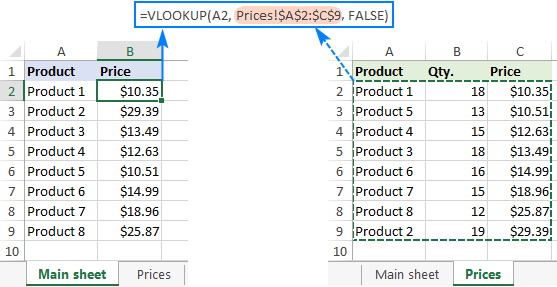

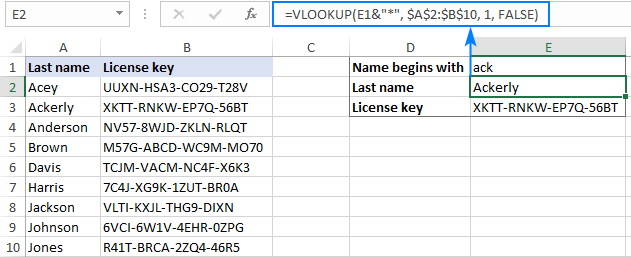




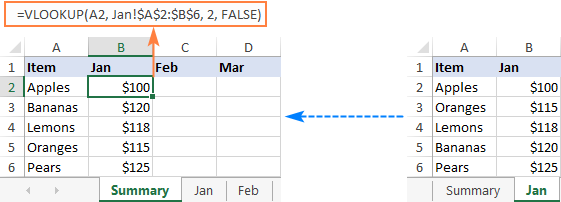


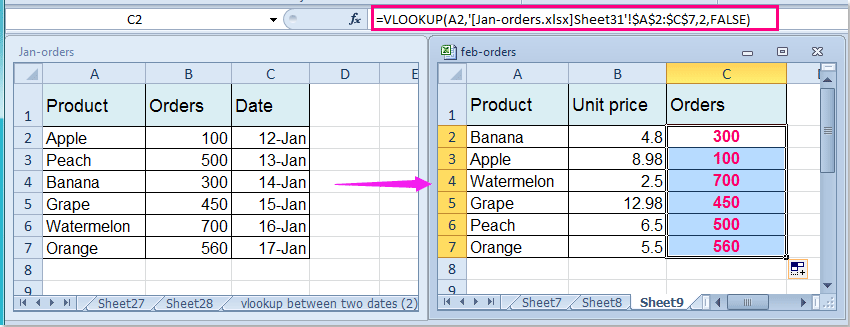




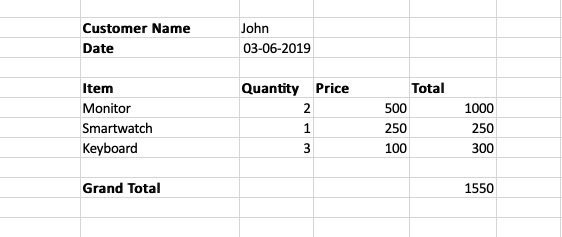
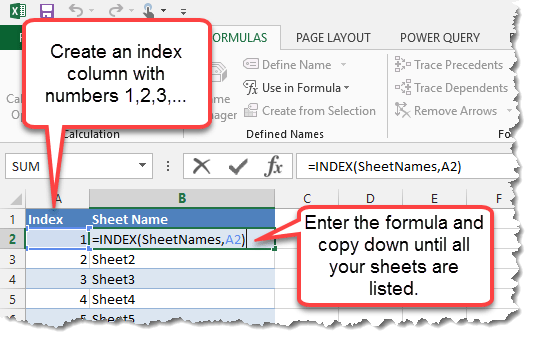
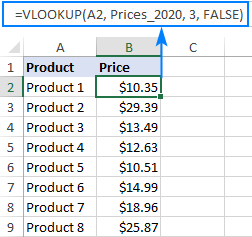
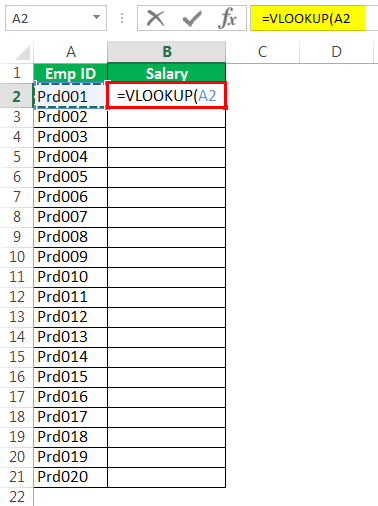




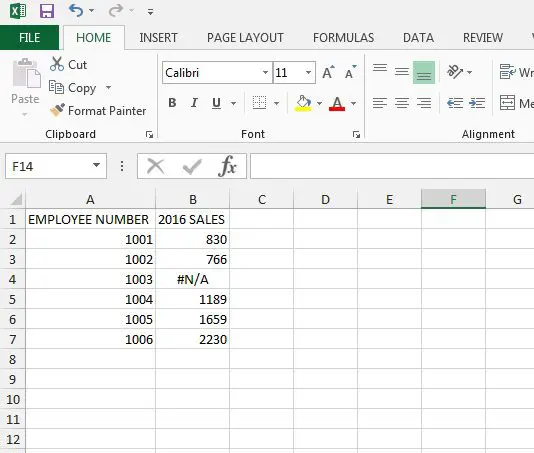



Article link: excel vlookup from another workbook without opening.
Learn more about the topic excel vlookup from another workbook without opening.
- Excel VBA to Vlookup in Another Workbook Without Opening
- How to Do Excel VLOOKUP From List in Other Workbook – Contextures
- How to recover unsaved Excel file or restore its previous version – Ablebits
- Excel VBA to Copy Data from Another Workbook without Opening
- Trying to use a linked workbook without opening the source files
- I need to vlookup in a close book without opening it. But i only …
- How to reference another workbook without opening
- VBA to vlookup into another workbook without opening said …
- VLOOKUP from another workbook – Excel formula – Exceljet
- Vlookup from another workbook which is closed
- VBA VLOOKUP or XLOOKUP in Another Sheet or Workbook
- load vlookup results from another (closed) workbook into an …
- VBA – Read Data from a closed Excel file without Opening it